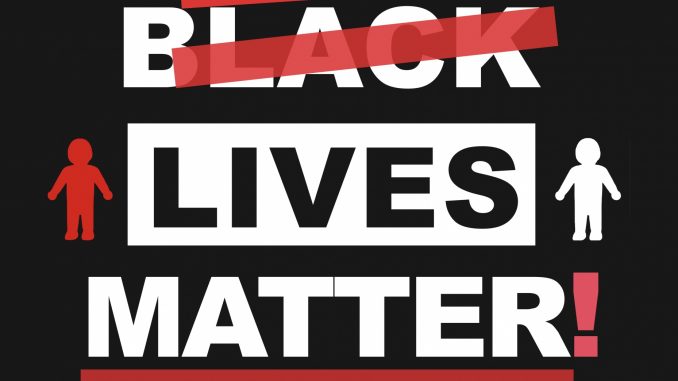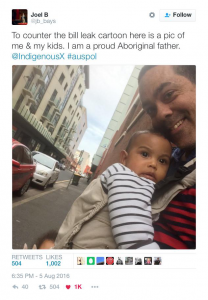
At the beginning of the Internet, some scholars imagined it as an unprecedented virtual world capable of breaching perpetual racism in real societies and a world where individuals from different races could interact equally and freely (Daniels, 2013, p. 695). Nevertheless, during the continual development of the Internet, racism preserved “vestiges of centuries-old forms” and revealed unique characteristics (Daniels, 2013, p. 696). Therefore, discussing the role of racism in cyberspace is valuable. This essay will chronologically focus on Silicon Valley, Google, and media platforms to critically examine how racism impacts the development of the Internet throughout in three sections. By demonstrating racist discourses towards indigenous groups in Australia under platforms’ suppression in the last section, this essay argues that the development of the Internet is inseparable from racism, despite tendencies of intensifying and resisting racism co-existing in current cyberspace.
One fountainhead of the Internet: Silicon Valley

Dating back to the initial development of the Internet, race and racism have been embodied in the Internet industry (Daniels, 2013, p. 697). In Silicon Valley, well-educated Caucasians are elites and leaders of high-tech corporations, while immigrants from outside Europe and the United States are mainly engaged in manual labour (Daniels, 2013, p. 697). The fragmentation of different races and the organisation of mono-racial groups facilitate the emergence of an intensely exclusive culture (Lusioli & Turner, 2021, p. 237). In other words, ideologies of white supremacy, exclusiveness and colonialism have been with the Internet since its inception and constitute the rudiment of the white-dominated framework by being encoded in algorithms and program design (Noble, 2018, p. 24). For instance, in the 1970s, St George’s Medical School’s recruitment process screens applicants simply because their names do not sound European (Garcia, 2016, p. 112). It is not the algorithm that makes itself do this. Instead, racist programmers and racist ideologies embedded in the development of the Internet are the main culprits.
Racism in Google under Web 1.0

Despite some ideas of the early Internet culture, like “New Communalist”, have changed, racist ideologies persist (Lusioli & Turner, 2021, p. 237) and perpetually influence subsequent corporations such as Google. Its search engine service dubbed “Google Search” accounts for 92.04% of the market (StatCounter Global Stats, 2021) and has integrated into everyday life. However, Google is full of racism (Noble, 2018, p. 17). Akin to corporations in Silicon Valley, exclusiveness is evident in Google, evidenced by statistics that over 60 per cent of the workforce is white, compared with just 5 per cent for African-Americans and Hispanics combined in 2014 (Garcia, 2016, p. 114). The perennial absence of people of colour consolidates the white-dominated framework and racism of Google in algorithms and program development (Garcia, 2016, p. 114). For example, in 2015, the facial recognition algorithm of Google Photo automatically identifies Jacky Alcine and his African-American friend as “gorillas”. With the diffusion of the incident online, Google responds it “was quickly putting a team together to address the issue” and promises to employ “people from a variety of perspectives, backgrounds, and experiences” to eradicate such problems. Unfortunately, little evidence proves Google delivers its promise (Garcia, 2016, pp. 113-114).
Algorithmic bias explained. Source: YouTube – https://youtu.be/bWOUw8omUVg
Racist ideologies are also revealed in search results towards minorities suffered from cyber-racism. Google Search is employed so frequently that we spontaneously believe that the information it furnishes is accurate and unbiased (Noble, 2018, pp. 24-25). Nonetheless, search is an exceedingly commercial product whose results coincide with the values and norms of advertisers and individuals who possess authority (Noble, 2018, p. 24, p. 26, p. 35). Racially discriminated vulnerable groups have difficulty influencing their information and representation online due to the lack of economic, political and social capital (Noble, 2018, p. 26), which further marginalises them and exacerbates cyber-racism and algorithms bias ultimately. There is nothing new that Google Search objectifies black girls as sexual products by only focusing on their intimate areas (Noble, 2018, p. 18).
Racism in social media platforms under Web 2.0
Social media platforms such as Facebook and Twitter thrive under Web 2.0 characterised by decentralising information (Benkler, 2006, pp. 29-30) and datafication. However, platforms also inherit racist ideologies from the initial development of the Internet, which incurs platforms as amplifiers of white supremacy and fabricants of racist discourses (Matamoros-Fernandez, 2017, p. 931). In Australia, Facebook and Twitter are criticised as “agents of colonisation by excluding Indigenous peoples” and “by framing them as a problem” (Carlson & Dreher, 2018, p. 16). A typical instance is the #IndigenousDads campaign. In 2016, The Australian published a cartoon by Bill Leak, which portrays the police returns a boy to his drunk father who says, “yeah righto, what’s his name then?”. The cartoon was rapidly reposted numerous times with a vast amount of racist discourses towards indigenous parents on social media and platforms over the following weeks under platforms’ connivance (Carlson et al., 2017, p. 3).


The white-dominated online framework perpetuating systematic platformed racism as one of the significant root causes of cyber-racism must be altered (Daniels, 2013, p. 711). Fortunately, it is worth noticing that platforms also furnish places for indigenous people to resist cyber-racism. In response to Bill Leak’s racist cartoon, an indigenous father, Joel Bayliss, shared a photo with his child on Twitter to disclose the pride of being a member of aboriginal groups and an aboriginal father (Carlson et al., 2017, p. 3). Bayliss’s resistance resonated with numerous aborigines, who imitated his move to document “how their fathers had raised them and how their families have inspired them” under the hashtag #IndigenousDads (Carlson et al., 2017, pp. 3-4). Scholars analyse that platforms under Web 2.0 amplify indigenous groups’ voices, allow them to cohere to develop activism, and most significantly, provide an environment for them to challenge deep-rooted white-dominated framework, cyber-racism and colonial discourses (Carlson & Dreher, 2018, p. 17).
Despite the #IndigenousDads campaign impacting discriminatory discourses online, the actualities that aboriginal people confront are still severe. Racism from Silicon Valley and the early days of the Internet still dominates the platform environment. Much of the racial discrimination towards an indigenous individual is challenging to bring to mass attention. In 2016, Celeste Liddle, an indigenous activist, shares a link of her speech about colonialism from New Matilda on Facebook. However, Facebook removes her link and prohibits her account due to “an image of a ‘sexually explicit nature’ in breach of its guidelines” and has no statements until the media reports the incident (Matamoros-Fernandez, 2017, pp. 930-931). It is perceptible from the case that platforms utilise policies and guidelines as a shield for racist behaviours. Humour is another shield for concealing and conniving racist discourses and ideologies under the tenet of freedom of speech, which is problematic for victims of cyber-racism and “fosters discrimination and harm” (Matamoros-Fernandez, 2017, pp. 936-938).
Conclusion
Racism has been inseparable from the Internet since the moment it was created. Racist ideologies were embedded in the early Internet culture by white elites of Silicon Valley in the initial development of the Internet. From Web 1.0, represented by Google, to Web 2.0, represented by social networking platforms such as Facebook and Twitter, the diversity and the scale of service of the Internet increased, but white supremacy, the white-dominated framework, exclusiveness, and colonialism entrenched simultaneously. Fortunately, it is perceptible that recently the wave of countering cyber-racism is rising, discriminated minorities are cohering to defend their rights through the Internet. While the power of racism on the Internet remains formidable, it is difficult to claim that the Internet has been a force for exacerbating or alleviating racism. Instead, these tendencies co-exist and are dynamic. Resisting the colour-blind Internet and gradually dispelling racist ideologies established by Silicon Valley several decades ago might be the next step.
References
Benkler, Y. (2006). The wealth of networks: how social production transforms markets and freedom. Yale University Press.
Carlson, B., & Dreher, T. (2018). Introduction: Indigenous innovation in social media. Media International Australia, 169(1), 16-20.
Carlson, B., Jones, L. V., Harris, M., Quezada, N., & Frazer, R. (2017). Trauma, Shared Recognition and Indigenous Resistance on Social media. AJIS. Australasian journal of information systems, 21, 1-18.
Daniels, J. (2013). Race and racism in Internet Studies: A review and critique. New Media & Society, 15(5), 695–719. https://doi.org/10.1177/1461444812462849
Garcia, M. (2016). Racist in the Machine: The Disturbing Implications of Algorithmic Bias. World Policy Journal, 33(4), 111–117. https://doi.org/10.1215/07402775-3813015
Lusioli, A. & Turner, F. (2021). “It’s an Ongoing Bromance”: Counterculture and Cyberculture in Silicon Valley—An Interview with Fred Turner. Journal of ManagementInquiry 30(2), 235-242. https://doi.org/10.1177/1056492620941075
Matamoros-Fernandez, A. (2017). Platformed racism: the mediation and circulation of an Australian race-based controversy on Twitter, Facebook and YouTube. Information, Communication & Society, 20(6), 930-946. https://doi.org/10.1080/1369118X.2017.1293130
Noble, S. U. (2018). Algorithms of oppression: How search engines reinforce racism. New York, USA: New York University Press.
StatCounter Global Stats (2021). Retrieved October 13, 2021, from https://gs.statcounter.com/search-engine-market-share

This work is licensed under a Creative Commons Attribution 4.0 International License.


